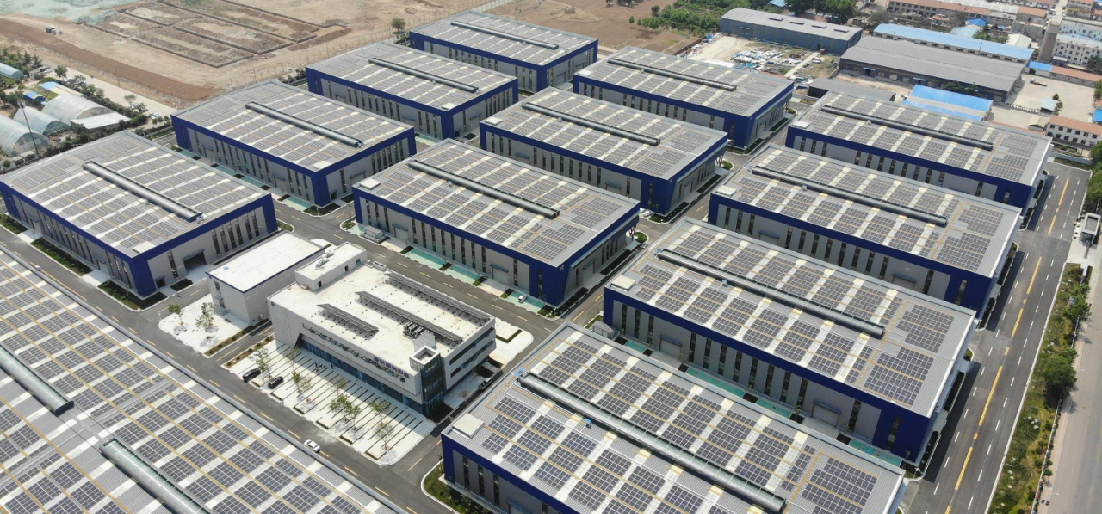Tel: 0086-532-88966982
0086-532-88965892
Website: www.lidajituan.com
E-mail: sales@lidajituan.com
Head office: 5th Floor, Building A, Dalen Center, 180 Haier Road, Qingdao, 266000, China
Light Steel Structure vs. Traditional Building: Which Saves More in Warehouse Design?
Classification:Company News
Release time:2025-04-23 09:00
Light Steel Structure vs. Traditional Building: Which Saves More in Warehouse Design?
The debate between light steel structures and traditional buildings (concrete/brick) is reshaping industrial constructions, especially for steel warehouses and workshops. With global leaders like Lida Group pioneering cost-efficient solutions, this article breaks down the financial and operational advantages of each method using real-world data, helping contractors and developers make informed decisions.
Key Differences at a Glance
Data source: 2023 Global Construction Cost Survey & Lida Group project archives
1. Upfront Cost Savings: Breaking Down the Numbers
Material and Labor Efficiency
Light steel structures use prefabricated components manufactured off-site by suppliers like Lida Group, reducing material waste by up to 60% compared to traditional concrete pours. For a 50,000 sq.ft. steel warehouse:
- Steel frame cost: 2M (Q235B/Q345B grades)
- Concrete/brick cost: 2.75M
Additionally, lightweight steel panels require fewer workers and simpler machinery. A 2022 study showed contractors save 25/sq.ft. on labor with steel builds.
Case Study: Lida Group’s Automotive Workshop
A German automaker saved 34% ($920,000) on a 65,000 sq.ft. workshop by opting for a light steel structure. Prefabricated walls/roofs cut on-site work from 14 months to 5 months, reducing loan interest and labor overhead.
2. Long-Term Operational Savings
Maintenance and Repairs
Traditional buildings face higher upkeep costs due to:
- Cracked concrete foundations (40,000 repairs)
- Brick mortar degradation (5-7% annual maintenance cost increase)
In contrast, light steel structures from certified suppliers feature:
- Galvanized steel frames (anti-corrosion for 25+ years)
- Replaceable insulated panels (0.30 for brick)
Based on Lida Group’s 100+ warehouse maintenance records
Energy and Thermal Performance
Steel warehouses with PU sandwich panels achieve U-values of 0.22 W/m²K, outperforming brick (0.55 W/m²K) and concrete (0.70 W/m²K). This translates to:
- 30% lower HVAC costs
- Faster temperature control for climate-sensitive storage
3. Design Adaptability: Future-Proofing Your Investment
Light steel structures allow easy modifications – a critical advantage for evolving workshop constructions:
- Column-free spans: Up to 60m for machinery layouts (vs. 12m max in traditional builds).
- Vertical expansion: Add floors without reinforcing foundations.
- Relocation: Disassemble and rebuild structures 3-5x faster.
Lida Group’s 2023 project in Malaysia saw a pharmaceutical client expand their steel warehouse by 40% in 3 months by adding modular units – an impossible feat with concrete.

4. Sustainability: Hidden Cost Benefits
Steel’s recyclability reduces disposal fees and aligns with carbon tax incentives:
- 95% recycled content: Lida Group’s steel frames save 6.5 tons of CO2 per 1,000 sq.ft. vs. concrete.
- LEED/BREEAM credits: Steel buildings qualify for 8-12 certification points, boosting property value by 7-15%.
5. Risk Mitigation: What Contractors Often Overlook
Construction Delays
Traditional projects face 20-30% delays due to weather (e.g., concrete curing halts in rain). Steel components are weather-resistant, with Lida Group reporting 98% on-time delivery across 200+ projects.
Seismic/Flood Resilience
Light steel’s flexibility minimizes earthquake damage (40% lower repair costs post-disaster vs. brick). Elevated steel foundations also reduce flood risks by 60%.
When Traditional Buildings Might Still Make Sense
While steel dominates most warehouse designs, consider traditional methods if:
- Local codes prohibit prefab constructions (rare in 90% of countries).
- Aesthetic requirements demand brick/stone façades (add steel hybrid options).
- Site conditions limit crane access (though Lida Group’s bolt-only systems require minimal machinery).
How to Choose the Right Supplier
Maximize savings by partnering with certified steel structure experts like Lida Group:
- Check certifications: ISO 9001, AISC, and EN 1090 for EU projects.
- Audit BIM capabilities: 3D modeling prevents design clashes, saving 5-8% in rework.
- Review warranties: 25+ years on frames, 10+ years on coatings.
Conclusion: Steel Delivers Faster ROI
For steel warehouses and workshops, light steel structures reduce upfront costs by 20-35% and long-term expenses by 40-60% compared to traditional methods. With suppliers like Lida Group offering smarter designs and faster builds, the choice is increasingly clear for developers prioritizing scalability, sustainability, and savings.
steel structure building,steel warehouse,constructions,modular house
Contact Us
Head Office: 5th Floor,Building A,Darron Center,No.180,Haier Road,Qingdao, 266000,China
Tel: 0086-532-88966982 88965892 Fax:0086-532-88965571
WhatsApp:+86 13793209022
Mobile/Wechat:+86-15166671720
Email: sales@lidajituan.com Website: www.lidajituan.com
Alternate Website: www.lidamodularhouse.com
Head Office: 5th Floor,Building A,Darron Center,No.180,Haier
Road,Qingdao, 266000,China
Tel: 0086-532-88966982 88965892
Fax:0086-532-88965571
Email: sales@lidajituan.com
Website: www.lidajituan.com
Alternate Websit: www.prefabhousecn.com
Wechat/WhatsApp:+86-13793209022
Copyright(c)2023 All Rights Reserved SEO Business license

